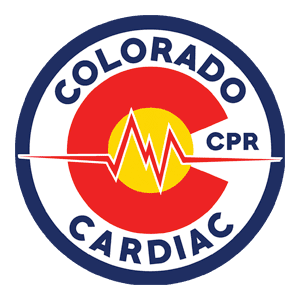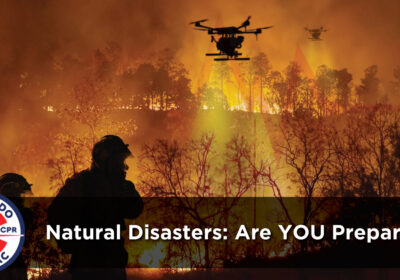Understanding Burnout: What it is & How to recognize it

Burnout is more than just feeling tired or stressed. It’s a state of emotional, physical, and mental exhaustion caused by prolonged stress — especially when that stress feels unmanageable or unrelenting.
The World Health Organization defines burnout as a syndrome stemming from chronic workplace stress that hasn’t been successfully managed. It has three main features:
- Exhaustion (feeling drained and depleted)
- Cynicism or detachment (mental distance from work or roles)
- Reduced performance or a sense of ineffectiveness
(Maslach & Jackson, 1981; World Health Organization, 2019)
In healthcare settings, burnout can also feel like losing the passion or purpose that originally drew you to the profession.
What Causes Burnout?
Burnout often happens when there’s a mismatch between what’s being asked of you and what you realistically have the capacity to deliver (Weinberg & Gould, 2019). Whether that’s time, emotional energy, physical stamina, or support — when your resources are constantly being outpaced by the demands, the result is chronic stress. Left unaddressed, that stress becomes burnout (Mental Health First Aid, 2015).
This model is supported by decades of research, including the widely recognized Job Demands-Resources (JD-R) model, which explains how high demands and low support/resources can wear people down (Demerouti et al., 2001).
SIGNS TO WATCH FOR
Common warning signs of burnout include:
- Feeling exhausted even after rest
- Becoming more irritable or emotionally numb
- Feeling like your work doesn’t matter anymore
- Struggling to concentrate or feel motivated
- Withdrawing from colleagues, family, or activities you used to enjoy
THREE CORE DIMENSIONS OF BURNOUT
Research has consistently identified three dimensions of burnout, particularly in occupational and healthcare settings (Maslach & Jackson, 1981; Maslach, Schaufeli, & Leiter, 2001; Weinberg & Gould, 2019):
1. Emotional Exhaustion
This is the core component of burnout. It refers to feeling emotionally overextended and drained by one’s work. It may manifest in:
- Persistent fatigue, even after rest
- Psychosomatic symptoms (e.g., headaches, back pain, gastrointestinal issues)
- Sleep disturbances
- Difficulty adapting to daily work demands
Note: While physical symptoms like back pain and fatigue can occur, they are often part of a broader pattern of stress-related somatization and should be presented as such (Maslach et al., 2001; Leiter & Maslach, 2016; Lanzi, 2025).
2. Depersonalization / Cynicism
This is the interpersonal dimension of burnout. Individuals begin to detach emotionally from their work, often developing a cynical or negative attitude toward clients, coworkers, or the organization itself. Symptoms can include:
- Irritability and frustration
- Reduced empathy or compassion fatigue
- Feelings of detachment or “numbing”
- Loss of motivation or interest in one’s tasks
- Insomnia, attention difficulties, and increased conflict
This detachment can be a self-protective response to emotional overload (Maslach & Jackson, 1981; Maslach et al., 2001; Lanzi, 2025).
3. Reduced Personal Accomplishment / Inefficacy
This dimension involves a decline in one’s sense of effectiveness and competence at work. The person may feel that they are no longer making a meaningful contribution. This can present as:
- Negative self-appraisal
- Reduced productivity and confidence
- Feelings of incompetence, guilt, or worthlessness
- Decreased coping capacity
- Increased absenteeism or presenteeism
In severe cases, burnout may be accompanied by depression, social withdrawal, substance misuse, or even suicidal ideation — though these represent co-occurring risks rather than diagnostic criteria of burnout itself (Maslach et al., 2001; Weinberg & Gould, 2019; WHO, 2019).
WHAT YOU CAN DO TO PREVENT & REDUCE BURNOUT
There are no universally accepted coping strategies for preventing or managing burnout. However, below is a curated list of ideas and approaches to consider when supporting your mental health, reducing workplace stress, and preventing burnout:
- Support both managers and employees
- Use PTO and take regular breaks
- Shift your perspective and expectations
- Reduce exposure to chronic job stressors
- Set work boundaries — work/life balance is key
- Build social connections both in and outside of work
- Find purpose and meaning in your role
- Encourage flexible work arrangements
- Take a holistic approach to well-being (physical, emotional, financial, and social)
- Set clear, realistic expectations
- Promote open communication, transparency, and feedback
- Use available resources and support groups
- Engage in activities like exercise, journaling, and hobbies
- Prioritize self-care
COACHING YOURSELF IN TOUGH SITUATIONS
Self-Defeat – When we make a mistake, we sometimes turn against ourselves with harsh, self-critical thoughts such as:
“How could you do this?”
“What were you thinking?”
“That was a big mistake…”
If you can’t think of something kind or encouraging to say to yourself, it’s better to avoid negative self-talk altogether. When you catch yourself being self-critical, pause and intentionally reframe your thoughts in a positive, compassionate tone. Be gentle with yourself — speak as you would to a friend.
ACTS OF KINDNESS
Be a rainbow in someone else’s cloud.
SELF-LOVE
Free yourself from whatever is weighing you down — even if it’s just for a few minutes. You deserve that space to breathe.
SUPPORT THAT LIFTS YOU UP:
- Mental Health America – Online screening Program 11 free, anonymous, confidential and clinically validated screens mental health early identification program.
- Screening tests: https:// screening.mhanational.org/screening-tools/
- Treatment locator: mhanational.org/finding-help
- National Suicide Prevention Lifeline:
- Call 988,
- Text HOME to 741741
- to reach a volunteer crisis Counselor 24/7
- www.988lifeline.org
- Insight Timer – Free apps for meditation and relaxation: https://insighttimer.com/
ADDITIONAL INFORMATION:
- For American Heart Association BLS -CPR, First Aid, PALS certification training contact our office at 720.639.2623 or www.3cpr.org
- For Mental Health First Aid certification or mental health workplace workshops contact our Program Manager at ts@3cpr.org
- For tailored Health and Wellness Lunch-n-Learns or presentations contact our Program Manager at ts@3cpr.org
- When enrolling for a CPR, First Aid or PALS class, use the promo code: 3CPRblog for a 15% discount!
BLOG WRITTEN BY:
Sophie Mabry, M.A. — ACSM Exercise Physiologist, Exercise is Medicine II, Certified Health and Wellness Coach, Sports Nutritionist, Mental Health First Aid Responder, BLS CPR and First Aid Instructor, former EMS professional.
REFERENCES:
- Demerouti, E., Bakker, A. B., Nachreiner, F., & Schaufeli, W. B. (2001) The Job Demands-Resources Model of Burnout. Journal of Applied Psychology, 86(3), 499–512. https://doi.org/10.1037/0021-9010.86.3.499
- Maslach, C., & Jackson, S. E. (1981) The Measurement of Experienced Burnout. Journal of Occupational Behavior, 2(2), 99–113. https://doi.org/10.1002/job.4030020205
- Maslach, C., Schaufeli, W. B., & Leiter, M. P. (2001) Job Burnout. Annual Review of Psychology, 52, 397–422. https://doi.org/10.1146/annurev.psych.52.1.397
- Mental Health First Aid Staff (2015) Mental Health First Aid USA (1st Ed.). National Council for Behavioral Health.
- Lanzi, R. G.(2025) Holistic Health: Bridging Disability and Mental Well Being Promotion Through Community Engagement. ACSM’s Health and Fitness Journal, 29 (2): 48-55
- Leiter, M. P., & Maslach, C. (2016) Understanding The Burnout Experience: Recent Research & Its Implications For Psychiatry. World Psychiatry, 15(2), 103–111. https://doi.org/10.1002/wps.20311
- Weinberg, R. S., & Gould, D. (2019) Foundations of Sport and Exercise Psychology (7th Ed.). Human Kinetics.
- World Health Organization. (2019) Burnout, An “Occupational Phenomenon”: International Classification of Diseases. Retrieved from https://www.who.int/mental_health/evidence/burn-out/en/



